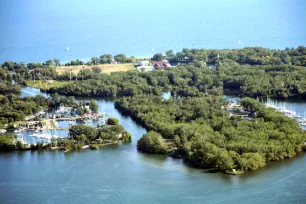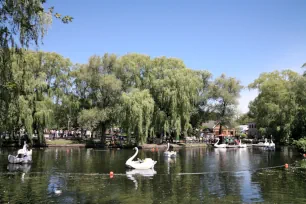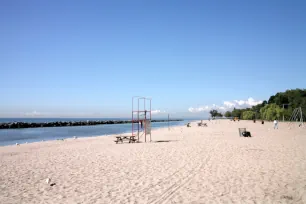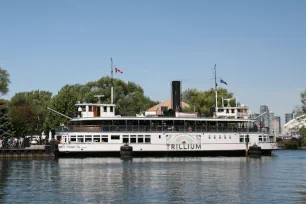A chain of fifteen tiny islands that provide a natural harbor for the thriving city of Toronto, the Toronto Islands are a favorite destination for locals and guests looking for a respite from city life.
History of the Islands



Canadian historians will tell you that the Toronto Islands weren’t always islands. In fact, they were a series of floating sandbars that were carried westward from the Scarborough Bluffs by the Lake Ontario currents.
By the early years of the nineteenth century, the largest of the sandbars had grown to more than nine kilometers long (5.5 miles), forming a harbor between the lake and the mainland area. Over the years, winds, currents, dredging and landfill operations have helped shape the islands, which separated from the mainland during a storm in 1858.
In the early years, the islands were used by the native peoples as a place of rest and relaxation. However, by the late 1700s, others had discovered the islands and the first hotel opened in 1833. Toronto Islands became a popular tourist destination year round, with swimming and other water sports attracting visitors in the summer months and skating and ice fishing enthusiasts arriving in the winter. Amusements and large Victorian summer homes were built, and the islands were soon dubbed “The Coney Island of the North”.
Attractions and small residential communities still exist on the island, though some residents lease the properties from a Trust established by the Ontario government for 99 year terms, expiring in 2094. Over the years, the city has proposed a number of options to protect the islands’ longevity, including the demolishing of these residential communities.


About the Islands
The largest of the Toronto Islands is Centre Island. About one million visitors head to Centre Island annually to enjoy the carnival-like atmosphere that dominates here. Eight thousand people once lived on the island, but now it’s largely a summer attraction. Be sure to visit Centreville, an old-fashioned amusement park that resembles a turn-of-the-twentieth-century village.
The second largest of the Toronto Islands is Ward’s Island, home to most of the island residents. You’ll find a yacht club here as well as extensive park facilities including a beach, picnic areas, and a playground. It’s also a great place to hike or ride a bicycle.
Hanlan’s Point was named for the first year-round residents of the Toronto Islands. Here you’ll find the Gibraltar Point Lighthouse, the Toronto Island Science School, and facilities for picnicking and enjoying local birds and wildlife. Toronto Island Airport has been located here since 1937.
Getting to the Islands

Three ferry routes connect Hanlan’s Point, Centre Island and Ward’s Island to Queen’s Quay docks at the foot of Bay Street in the city of Toronto. The islands are car-free, so the ferries are your only option, besides flying to the islands.
Schedule and departure times vary with the season. The trip from the mainland to each of the islands takes about 15 minutes. Fares are quite reasonable and during most times of the year (except the very busy peak season), bicycles may be carried onto the ferry.
- Next: Rogers Centre
- More Sights & Attractions in Toronto

